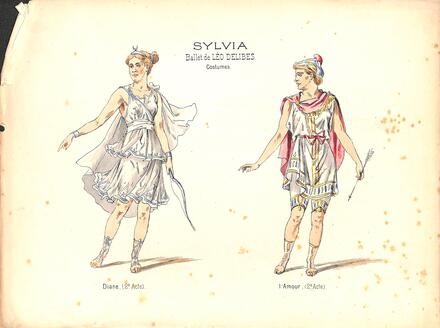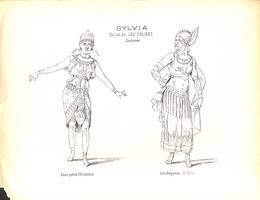Sylvia ou La Nymphe de Diane

Ballet en trois actes.
In the aftermath of the Franco-Prussian War of 1870, Delibes stood out as one of the most promising young French composers. It was to him therefore that the director of the Paris Opéra, Olivier Halanzier, turned in 1875 to compose the music for the first ballet to be shown at the newly constructed Palais Garnier, intended to showcase the talent of the Italian ballerina Rita Sangalli. The ballet tells of the love of the gentle shepherd Aminta for Sylvia, a nymph of Diana, the goddess of hunting and chastity; she is also loved by the formidable hunter Orion. Touched by Aminta’s love, then kidnapped by Orion, Sylvia escapes with the help of Eros. At the end of the ballet Diana forgives her faithless nymph and gives her blessing to the wedding of the two lovers. Delibes played a much more important part in Sylvia’s creative team than he did for La Source and Coppélia, where the personality of the choreographer Arthur Saint-Léon was predominant. His music testifies to artistic ambitions that were new for a ballet: in particular he brings a symphonic texture and an unusual coherence to the passages accompanying the action, while showing more than ever his brilliant orchestration. Unfortunately, however, the music was not to the liking of the regular Opéra audience, which found it too complex. This semi-failure, insufficiently compensated by the success the ballet obtained in Vienna and that of the orchestral suite taken from the work, partly explains why Sylvia was Delibes’s last ballet. Though less popular than Coppélia, Sylvia has never left the repertoire: Frederick Ashton’s neoclassical choreography for the Sadler’s Wells Ballet (1952) and that of John Neumeier for the Paris Opéra (1997) have gone down in history.




